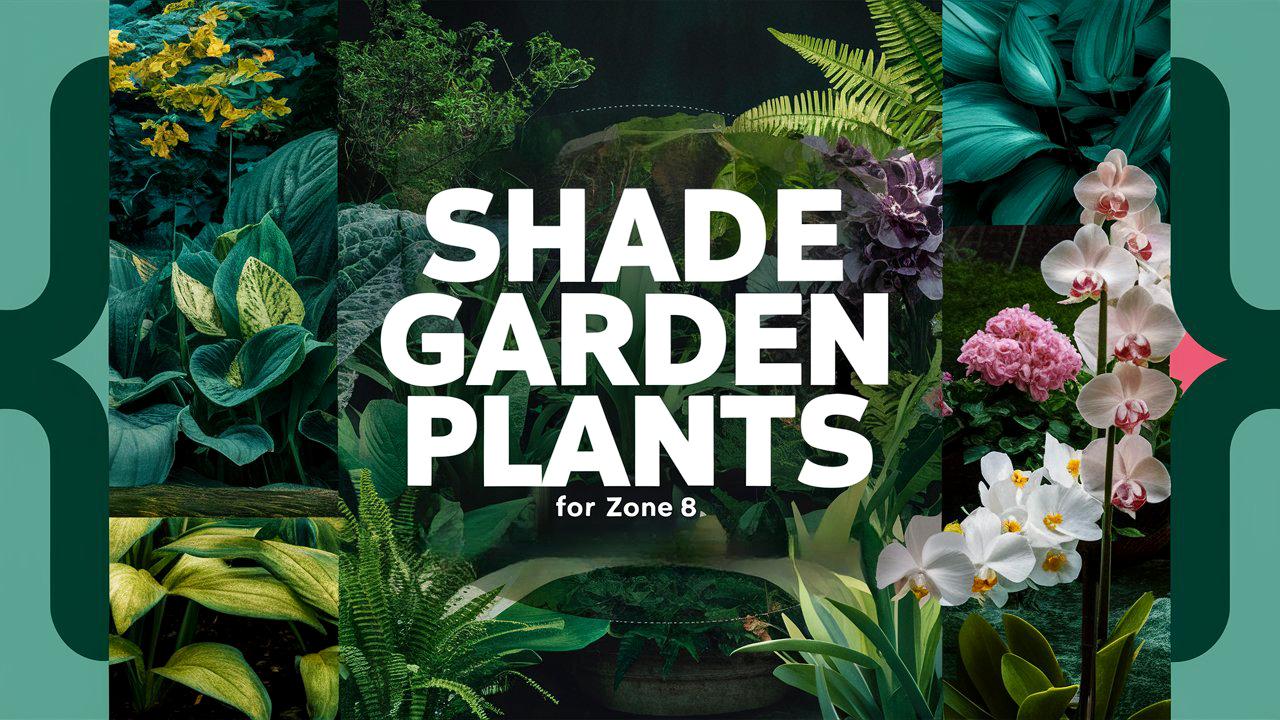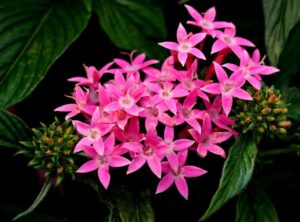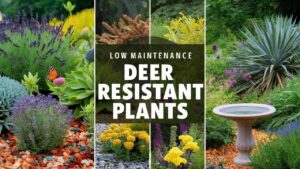Gardening in shaded areas can be a rewarding experience, especially in USDA Hardiness Zone 8, which experiences mild winters and warm summers. This zone often presents a unique set of challenges, such as soil conditions and sunlight absorption, but it also opens up a myriad of opportunities for growing shade-tolerant plants.
Whether you are transforming a dark corner of your garden or revamping a shaded landscape, the following plants will thrive beautifully in Zone 8, providing a lush and vibrant backdrop to your green space.
Acanthus
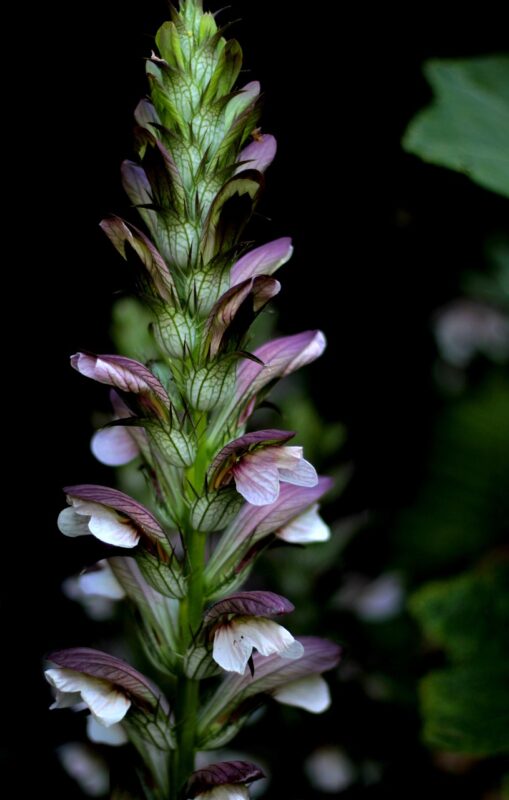
Acanthus, known for its striking foliage and unique flower spikes, is a perfect addition to any shade garden in Zone 8. These perennial plants can grow up to four feet tall, boasting ornate, deeply lobed leaves that can add a bold architectural element to your garden. The flowers, which appear in late spring to early summer, rise above the foliage and attract various pollinators, including bees and butterflies. Though Acanthus prefers well-drained soil, it is quite adaptable and can flourish even in semi-shade conditions with some moisture retention.
Ajuga
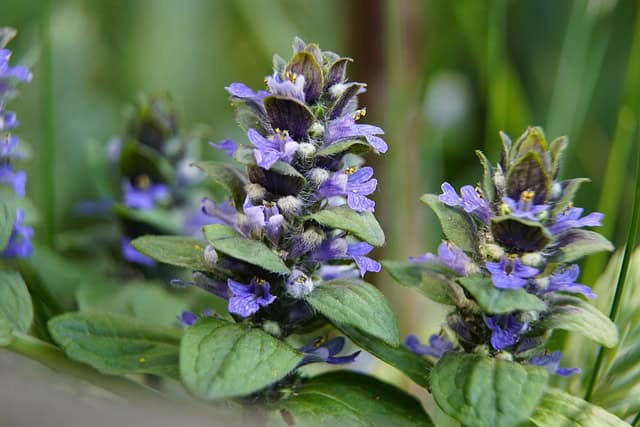
Ajuga, often referred to as bugleweed, is a low-growing ground cover that excels in shady spots. This perennial features glossy leaves that can display a variety of shades—from deep green to bronze and even variegated options. Ajuga produces lovely spikes of blue, purple, or white flowers in spring that not only add color but also attract beneficial pollinators. This plant is incredibly hardy, capable of withstanding foot traffic while maintaining its vibrant appearance. It thrives best in moist but well-drained soil, making it an excellent choice for those tricky shady areas beneath trees or shrubs.
Beautyberry
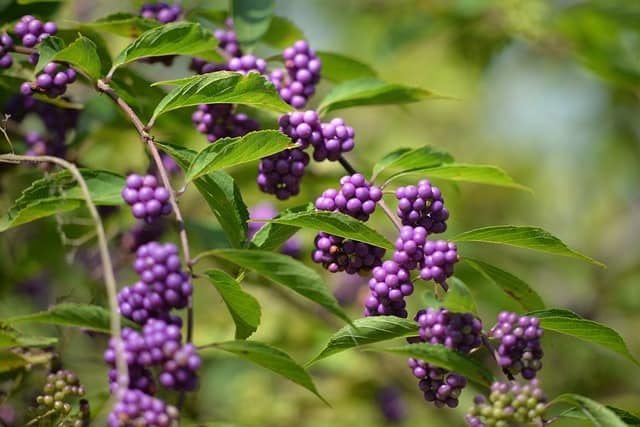
Beautyberry (Callicarpa) is known for its dazzling clusters of purple berries that develop in late summer and persist into the fall, making an eye-catching statement in any shade garden. This deciduous shrub can grow up to 6 feet tall, with arching branches and lush green foliage. While Beautyberry prefers full sun, it tolerates partial shade and can adapt well to various soil types. It’s particularly loved by birds, who feast on the berries once they mature. Incorporating this plant into your garden not only provides visual interest but also contributes to local wildlife habitats.
Bleeding Hearts
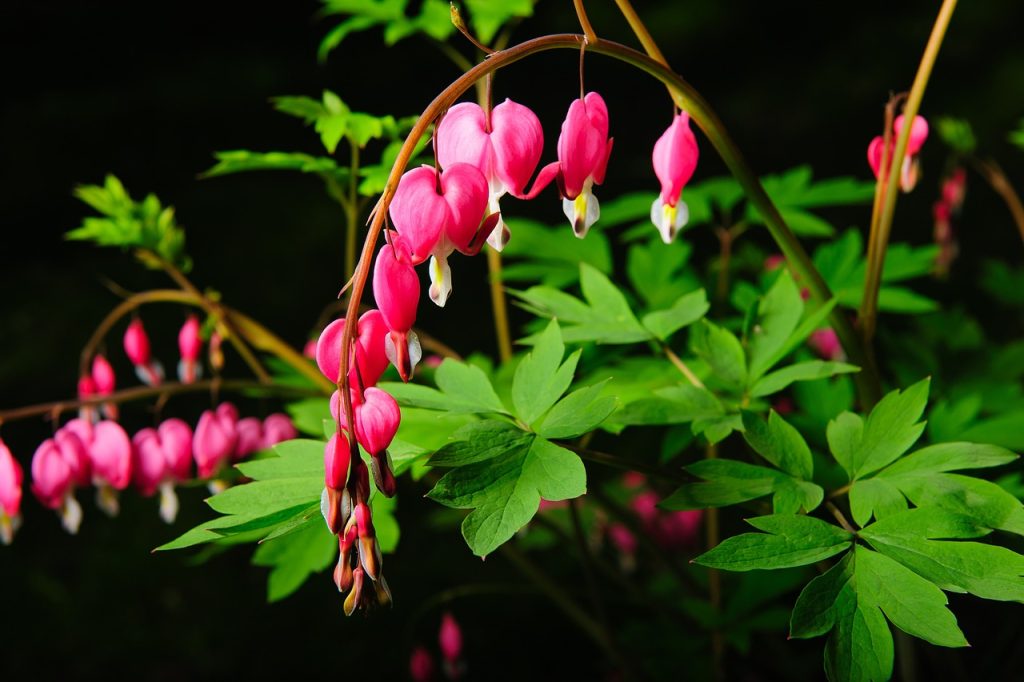
Bleeding Hearts (Dicentra spectabilis) are charming perennial plants perfect for shaded nooks in your garden. Their iconic, heart-shaped blooms hang delicately from arching stems, creating a romantic and whimsical atmosphere. Typically blooming in spring, they come in shades of pink and white, adding a pop of color to your shaded areas. The feathery foliage also contributes to the plant’s appeal even when the flowers are not in bloom. Bleeding Hearts thrive in moist, well-drained soil and appreciate some protection from harsh afternoon sun, making them ideal for partial shade settings.
Camellia
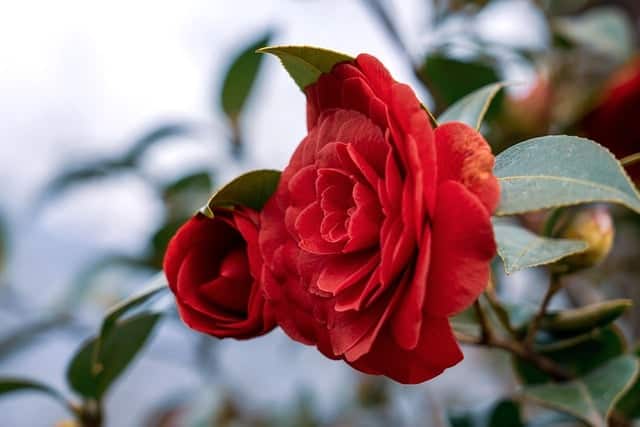
Camellias are the epitome of elegance and charm, making them a stunning choice for any Zone 8 shade garden. These evergreen shrubs can flourish in full shade to partial shade and produce large, showy blooms in varying colors, including pink, red, and white, during late winter to spring—when most gardens crave color. Camellias prefer acidic, well-drained soil and require a layer of mulch to retain moisture. Their glossy leaves and beautiful flowers create an attractive backdrop throughout the year, providing much-needed winter interest.
Cephalotaxus
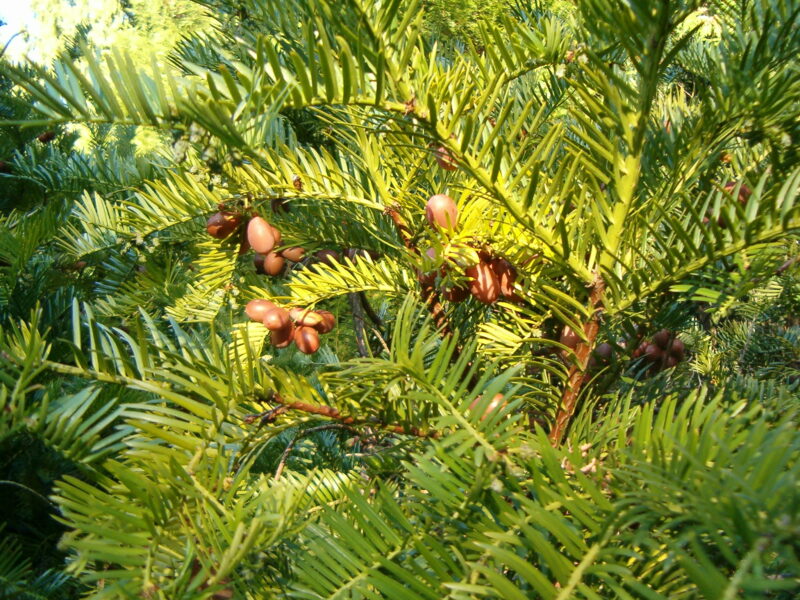
Commonly known as Plum Yews, Cephalotaxus is an evergreen conifer that thrives in shaded conditions, making it a perfect choice for Zone 8 gardens. This sturdy plant has dark green, needle-like foliage that can lend a sense of structure and formality to the garden. It tends to grow slowly but can reach heights of up to 10 feet, depending on the variety. Plum Yews are drought-tolerant once established and prefer moist, well-drained soil. They can be used effectively as hedges or foundation plantings, providing year-round greenery without the need for direct sunlight.
Chinese Mahonia
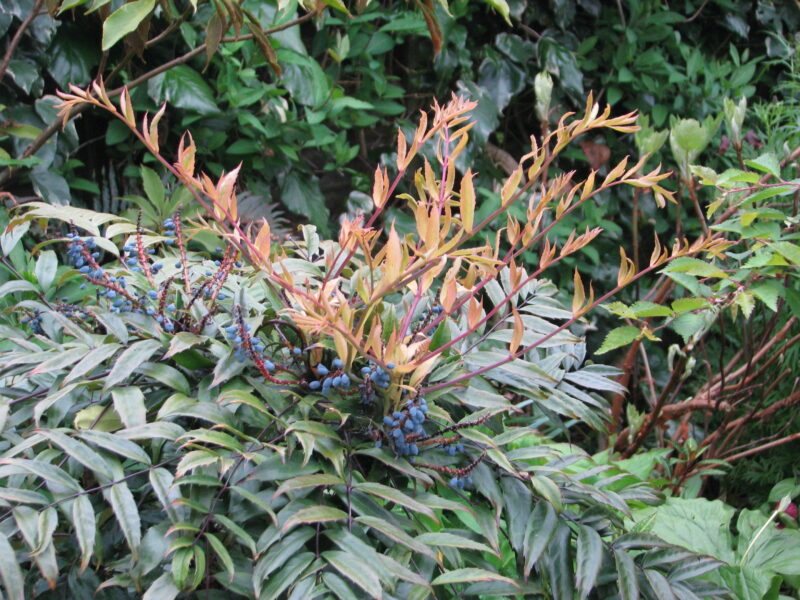
Chinese Mahonia, or Mahonia fortunei, is a striking evergreen shrub known for its glossy leaves and vibrant yellow flowers that bloom in late winter to early spring. This plant is particularly valued for its ability to thrive in full shade, making it an excellent choice for darker areas of your garden. It can grow between 4 to 6 feet tall and produces clusters of dark blue berries that attract birds. While Chinese Mahonia can tolerate a wide range of soil types, it is happiest in well-drained, moderately moist ground, offering a lush, tropical feel to any shaded landscape.
Daphne
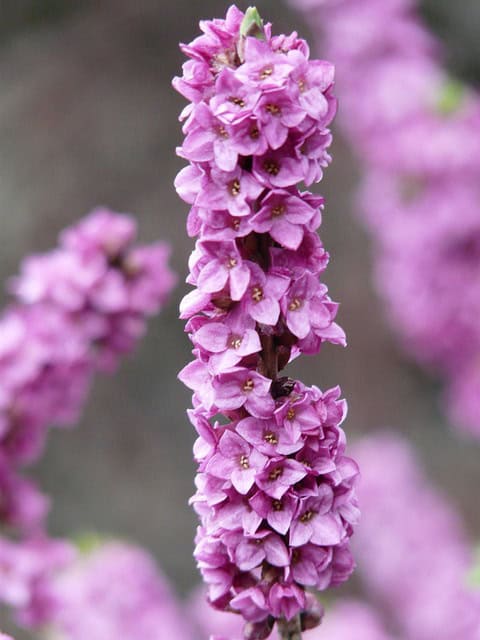
Daphne is a small, evergreen shrub that delights gardeners with its aromatic flowers, making it an excellent addition to a shade garden in Zone 8. Blooms typically appear in early spring in shades of pink, white, or yellow, attracting not only the eye but also various pollinators. Daphne prefers well-drained soil and should be placed in dappled or partial shade to protect its delicate foliage from scorching. With its compact growth habit (usually around 3 feet tall), this shrub can be planted in borders, rock gardens, or as an accent plant, providing fragrance and beauty to your shaded sanctuary.
Daylily
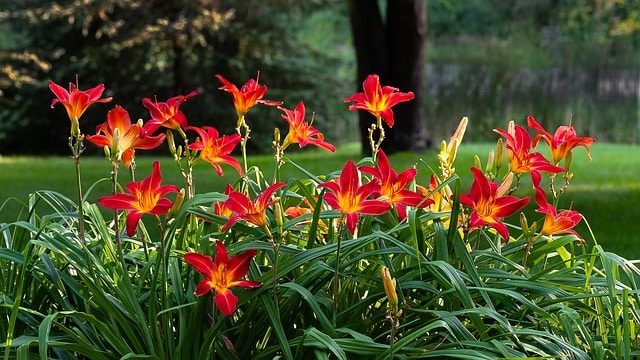
Although Daylilies (Hemerocallis) are typically known for their nuclear options, many varieties can thrive in shaded areas as well. These hardy perennials offer a plethora of color choices and bloom profusely throughout the summer. While they prefer at least six hours of sun, lighter or filtered shade can work; the key is to ensure they receive enough light to produce abundant flowers. Daylilies are low maintenance and can tolerate a variety of soil types, making them an excellent choice for beginners. They create cascading mounds of attractive foliage, providing visual interest even when not in bloom.
Golden Japanese Forest Grass
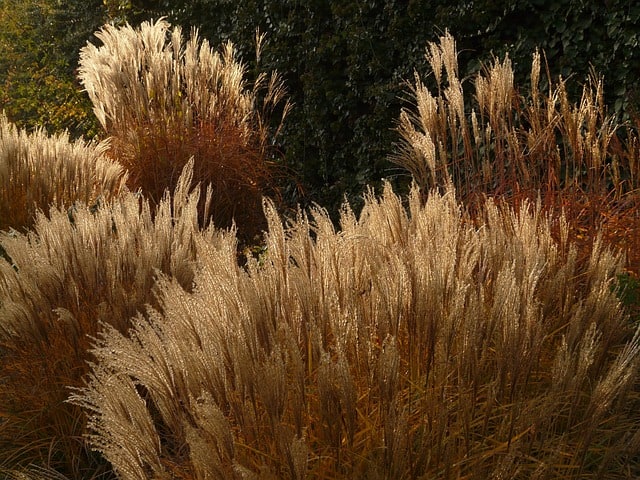
If you are looking for ornamental grasses for your shade garden, Golden Japanese Forest Grass (Hakonechloa macra) is an excellent choice. This graceful grass features arching, golden-yellow blades that can brighten up dim spots. It typically grows 12 to 18 inches tall and spreads, creating a lovely, textured carpet in the shade. This plant is versatile, as it thrives in various soil types, providing vibrant color and movement to your garden. A diverse planting, alongside blooms or other plants, can create a serene and calming effect.
Hellebore
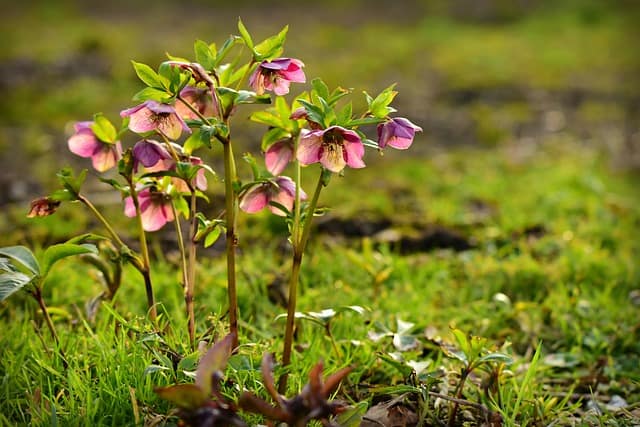
Hellebores are a go-to favorite for shade gardens in Zone 8, known for their charming, nodding flowers that bloom in late winter to early spring. These perennial plants thrive in rich, moist soil and prefer partial to full shade. They come in an array of colors, from soft pastels to deep, vibrant hues, often with striking markings. Hellebore foliage is also attractive, as it remains lush throughout the growing season. Notably, these plants are relatively low maintenance, making them an ideal choice for beginner gardeners looking for reliable contributors to their shaded areas.
Heartleaf Brunnera
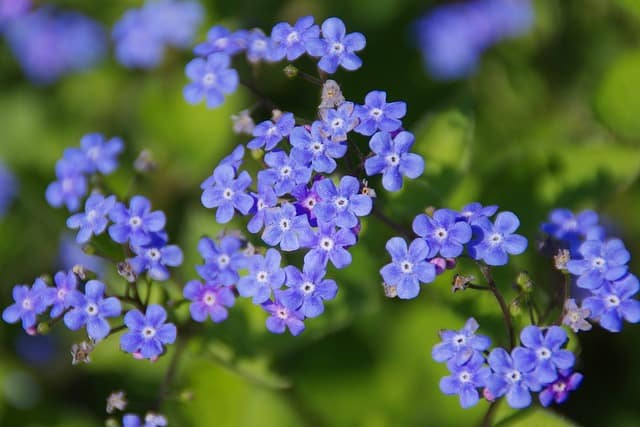
Heartleaf Brunnera (Brunnera macrophylla) is a perennial that brings a touch of charm to shaded gardens with its beautiful, heart-shaped leaves and delicate blue flowers. Often referred to as Siberian Bugloss, this hardy plant produces clusters of small, forget-me-not-like blooms in spring. It thrives in partial to full shade, preferring cool, moist conditions. The blue flowers provide a stunning contrast to the foliage, making it an excellent companion plant for larger, leafy specimens. The large leaves serve as a fantastic ground cover, helping suppress weeds and maintain soil moisture.
Hostas
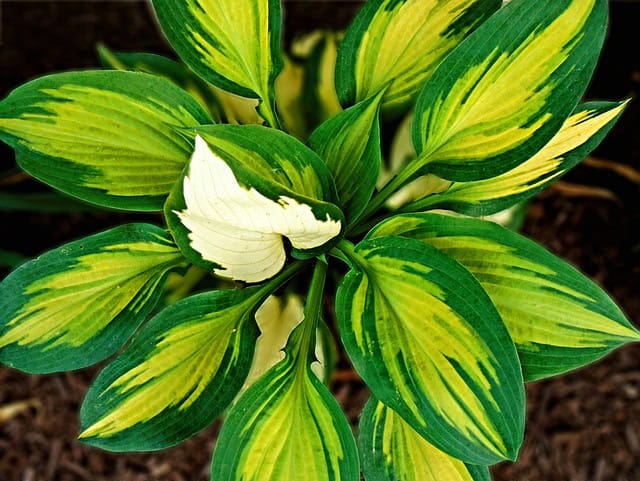
Hostas are undoubtedly the king of shade-loving plants, making them a must-have for Zone 8 gardeners. With a vast array of sizes, shapes, and colors—from deep greens to blues and variegated options—Hostas can be incorporated into virtually any garden design. They produce lovely spikes of flowers in late summer, which attract hummingbirds and pollinators. Hostas thrive in rich, well-drained soil and prefer moist conditions. Their foliage provides structural interest and can fill larger areas of your garden, creating a lush, green paradise.
Illicium
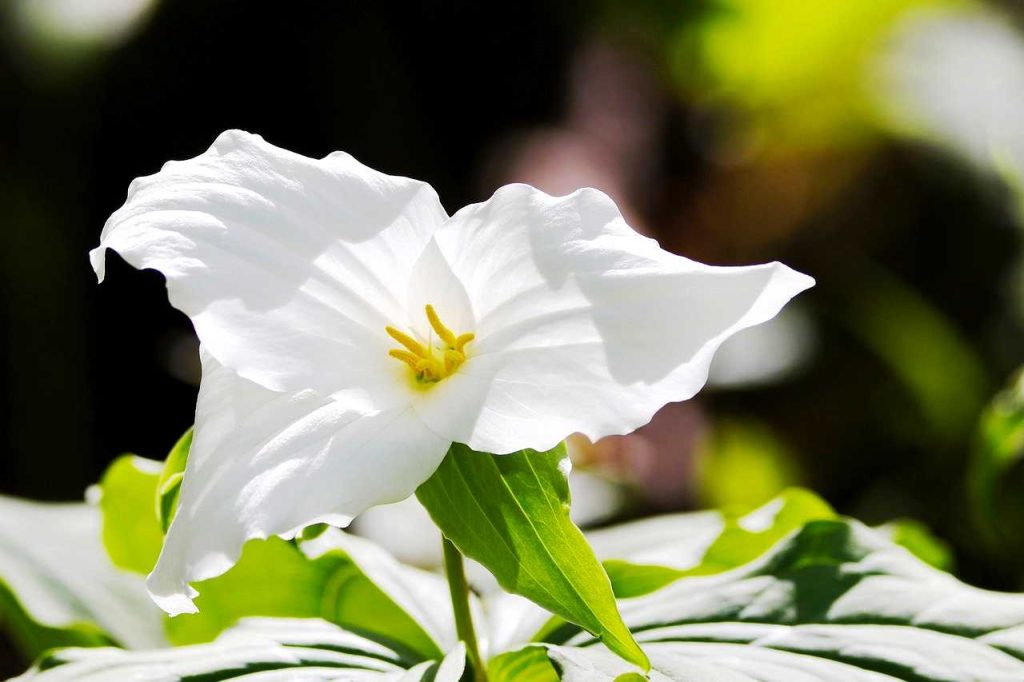
Illicium, also known as star anise or anise trees, are evergreen shrubs that can add a unique flair to shade gardens. They are loved for their glossy green leaves and star-shaped flowers that often bloom in shades of yellow and can emit a pleasant fragrance when crushed. Illicium prefers partial to full shade and well-drained soil, making them an ideal plant for shady nooks. Furthermore, some species are known for their attractive berries, which can draw in wildlife, enhancing your garden’s ecosystem.
Japanese Fatsia
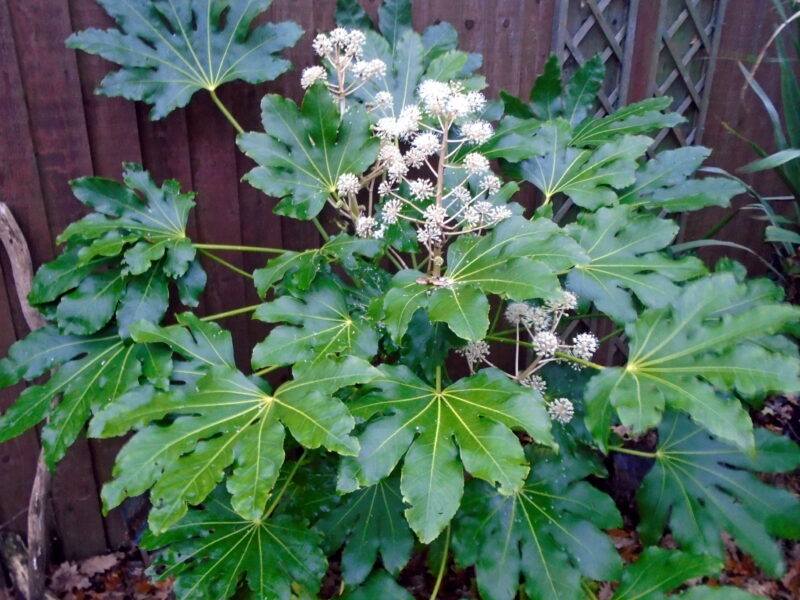
The Japanese Fatsia (Fatsia japonica) is a striking evergreen shrub known for its large, glossy, palmate leaves. It thrives in fully shaded areas, making it an excellent option for challenging spots that lack sunlight. This plant can grow up to 6 feet tall and produces creamy white flowers in clusters during the fall, which can lead to small black fruits. Fatsia prefers well-draining, rich soil and a moderate amount of moisture. Its bold foliage can create a tropical feel, providing year-round interest in your shaded areas.
Kerria
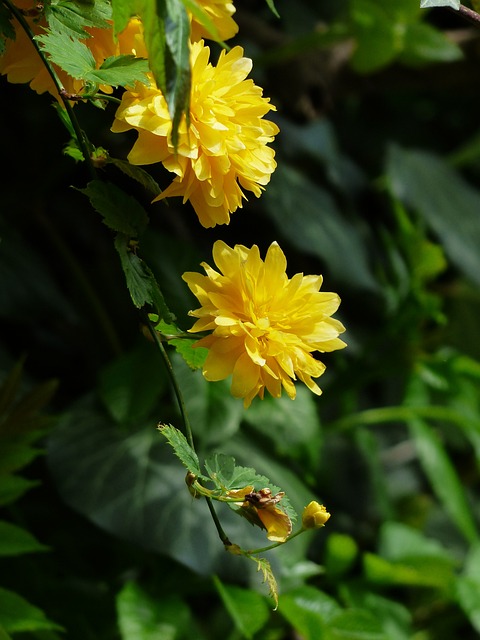
Kerria Japonica, commonly known as Japanese Kerria or Yishi, is a deciduous shrub that excels in shade gardens. This plant features bright yellow flowers that typically bloom in early spring, adding a splash of color to otherwise muted areas. Kerria can reach heights of 3 to 5 feet and prefers partial to full shade. Its ability to thrive in various soil types makes it a versatile addition to your garden. After flowering, the lush green foliage remains vibrant throughout the growing season, creating attractive hedges or borders.
Lungwort
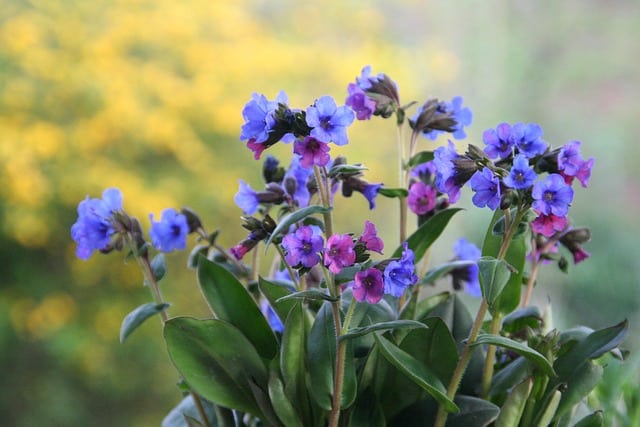
Lungwort (Pulmonaria) is another excellent shade-loving perennial, known for its charming foliage and early spring flowers. The leaves often have striking silvery spots and come in a variety of tones, which provide visual interest throughout the landscape. Lungwort blooms in early spring with clusters of pink, blue, or white flowers, attracting pollinators to your garden. This hardy plant prefers moist, well-drained soil and can thrive in partial to full shade. Its ground-covering ability makes it perfect for filling in gaps in your shade garden.
Oakleaf Hydrangea
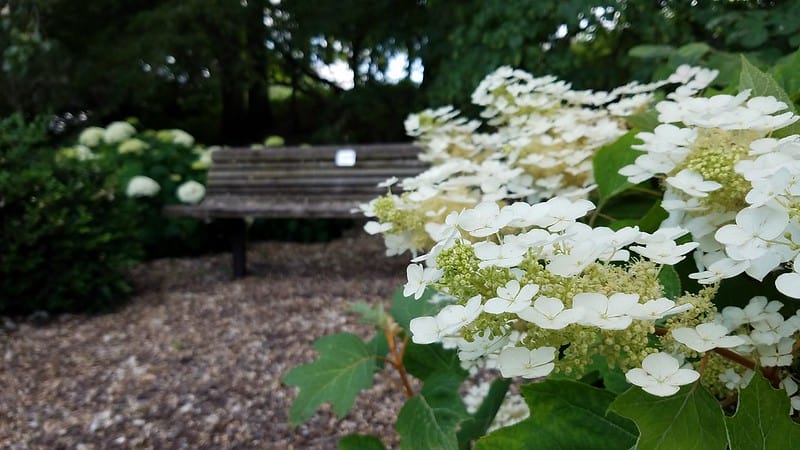
Oakleaf Hydrangea (Hydrangea quercifolia) can be an exquisite addition to the shade garden, combining stunning flowers and ornamental foliage. Named for its oak-shaped leaves, this deciduous shrub produces large, cone-shaped flower heads that shift from white to pink as they mature. It can grow to be about 4-6 feet tall and thrives in well-drained, moisture-retentive soil, appreciating partial shade best. With its beautiful fall foliage that turns bronze and red, Oakleaf Hydrangea provides seasonal interest throughout the year.
Pineapple Lily
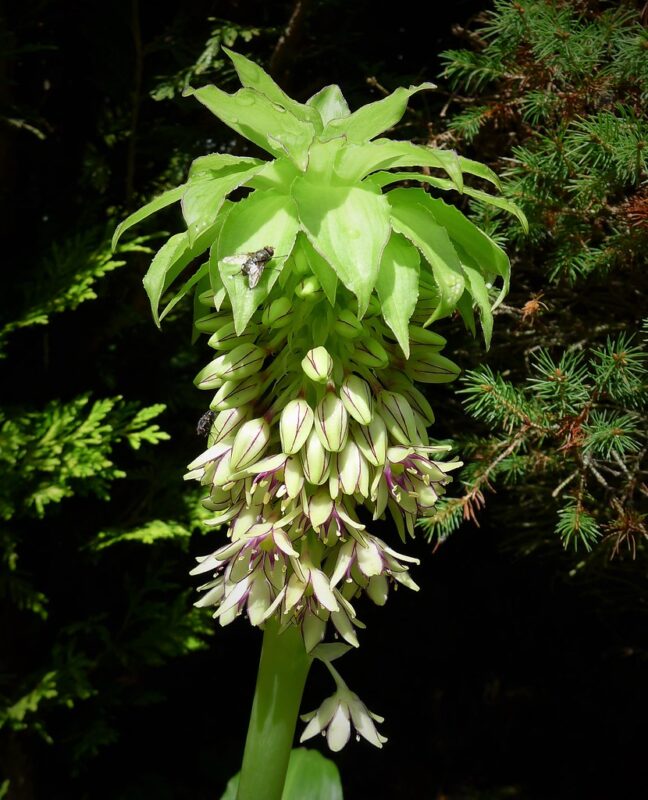
The Pineapple Lily (Eucomis) is a unique and intriguing choice for anyone looking to add some flair to their shade garden. This striking plant features lush green leaves that emerge from a central rosette, resembling the foliage of piquant pineapple. It produces tall flower spikes topped with clusters of small, star-shaped flowers that can range in color from white to purple. While it prefers a bit more sunlight, it can tolerate part shade, especially in the hotter summer months. As a bonus, Pineapple Lily is relatively drought-resistant once established, making it an interesting yet low-maintenance choice.
Shasta Daisy
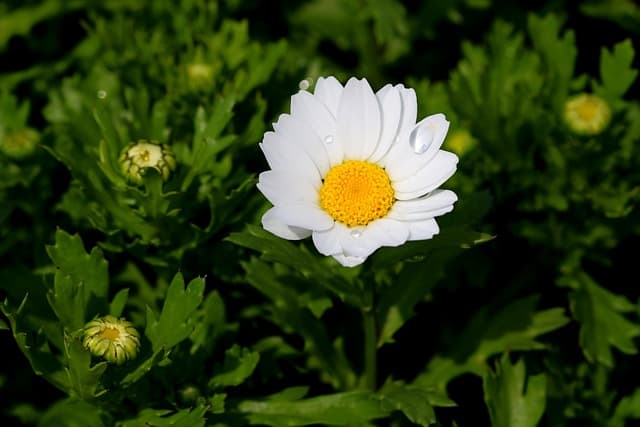
Shasta Daisies (Leucanthemum × superbum) are classics in any garden, and they also can adapt to lighter shaded areas in Zone 8. Known for their cheerful, white petals and sunny yellow centers, these perennial plants can provide delightful splashes of happiness throughout the summer months. While they typically prefer full sun, many Shasta Daisy varieties tolerate partial shade, especially if the soil retains moisture. They are easy to care for, require average soil, and can even attract butterflies and other pollinators to your garden.
Siberian Bugloss
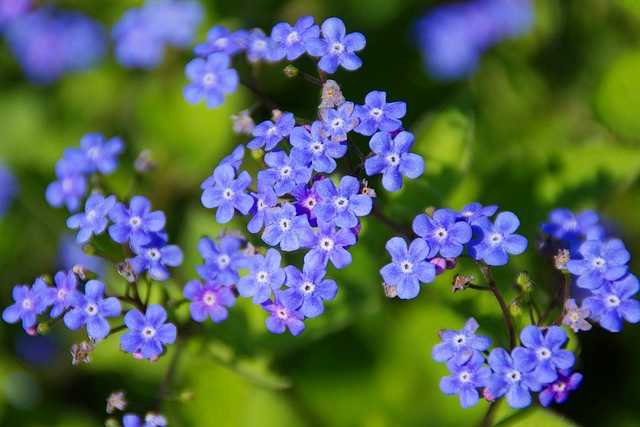
Siberian Bugloss, more commonly known as Brunnera macrophylla, is an excellent shade plant that thrives in part to full shade, adding airy and charming features to your garden. This perennial is famous for its heart-shaped leaves and tiny, blue, forget-me-not-like flowers that appear in spring. Siberian Bugloss is perfect for growing in moist, well-drained soil and works well as a ground cover option, as it spreads slowly while staying low to the ground. Its delightful, springtime aesthetic combined with its hardy nature makes it a gardener’s favorite.
Spotted Deadnettle
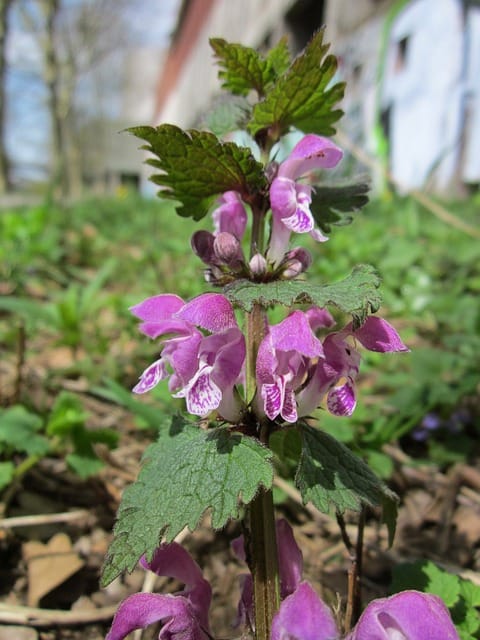
Spotted Deadnettle (Lamium maculatum) is a versatile and lovely choice for ground cover in shaded areas of your garden. This perennial offers vibrant foliage marked with silver spots, creating visual interest even before it blooms. In spring, it produces delicate flowers in shades of purple, pink, or white, attracting honeybees and other pollinators. Spotted Deadnettle thrives in moist soil and benefits from a layer of mulch, ideal for cooler areas of your yard. It’s also highly adaptable, making it an ideal choice for beginners seeking fillers in shady landscapes.
Phlox
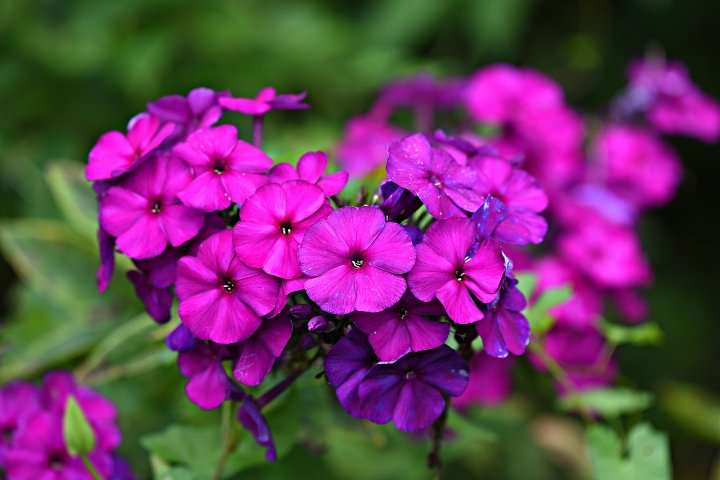
Phlox is a delightful addition to shade gardens, offering vibrant colors and fragrant blooms that flourish in part sun to shade. Garden Phlox (Phlox paniculata) and Creeping Phlox (Phlox subulata) are popular choices for their attractive blooms and hardiness. They provide a range of colors, such as pink, white, and purple, which bloom from late spring to early summer. Garden Phlox prefers moist, well-drained soil, while the creeping variety can tolerate drier conditions. Both varieties are easy to maintain, making them suitable for novice gardeners.
Toad Lily
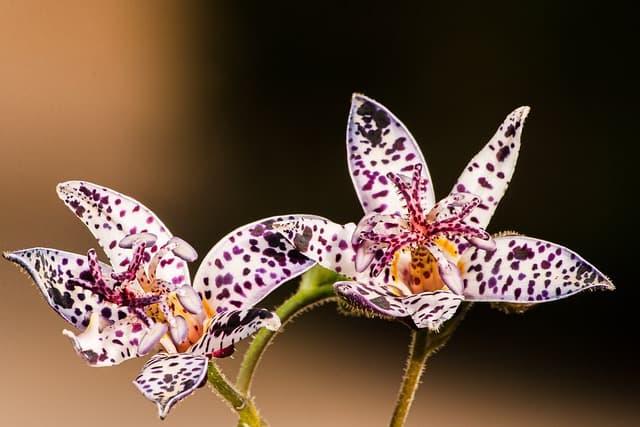
For an exotic touch, consider adding Toad Lily (Tricyrtis) to your shade garden. This perennial plant produces unique, orchid-like flowers that bloom in late summer to fall, extending the color in your garden when many other plants have faded. Toad Lilies flourish in rich, moist soil and do well in dappled or filtered shade. Their interesting foliage and scattered blooms can add charm and intrigue to even the most shaded corners of your landscape, appealing to those who appreciate unique and uncommon plants.
Periwinkle
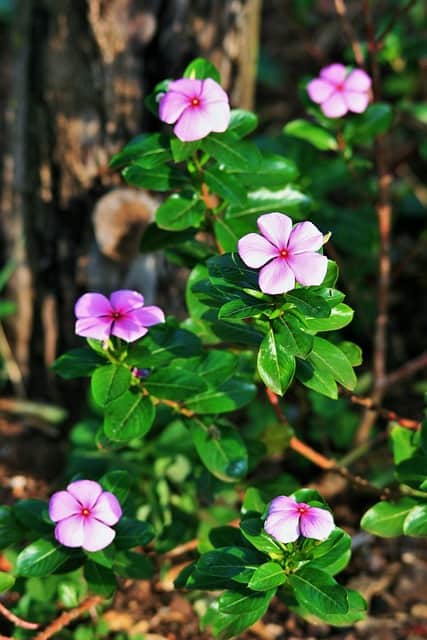
Periwinkle, or Vinca minor, is an excellent evergreen ground cover that thrives in shaded areas of Zone 8. Known for its attractive, glossy leaves and charming purple or blue flowers that bloom in spring, Periwinkle can help suppress weeds while providing continual interest to low-light garden spaces. This resilient plant enjoys well-drained soil and partial shade but can also tolerate full shade. It’s an industrious grower, perfect for covering bare spots and enhancing the beauty of your shaded nooks effortlessly.


